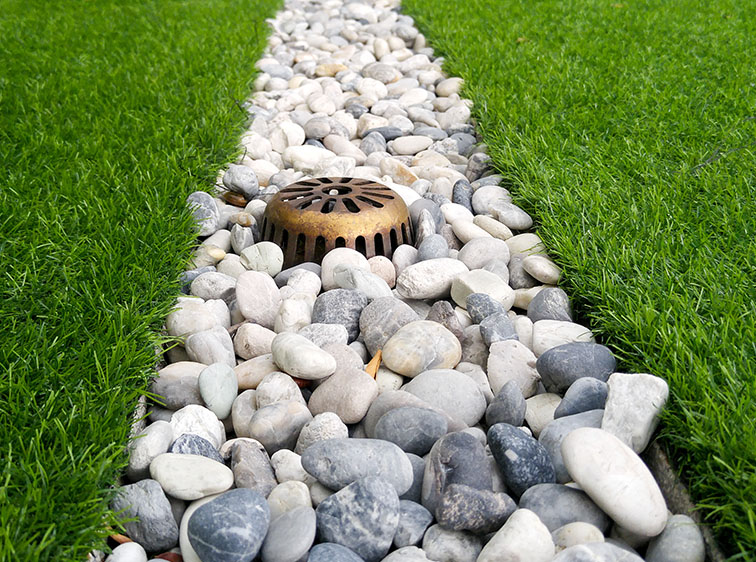Drainage issues can transform your lush, verdant yard into a waterlogged mess. On the bright side, synthetic turf in Texas has emerged as a superb solution to these persistent problems, offering impressive water drainage capabilities.
Common Drainage Problems in Texas Yards
Across Texas, homeowners regularly confront a wide variety of drainage issues that keep yards from reaching their full potential.
Soil Compaction
Hard, compacted soil poses significant drainage issues, especially in parts of Texas where clay soil dominates. Water fails to percolate efficiently through compact clay soil, leading to pooling on the surface and potentially causing a boggy, unusable yard.
Torrential Rains
Texas weather is marked by its unpredictability, with periods of drought punctuated by bouts of torrential rains especially during the hurricane season. These heavy downpours often exceed the soil’s absorption capacity, escalating flooding issues and causing substantial damage to natural grass lawns.
Improper Grading
Improper or insufficient grading can prevent water from naturally flowing away from your property. Instead, water accumulates in unwanted areas, weakening the foundation of structures and fostering mosquito breeding grounds.
How Does Artificial Grass Solve These Drainage Issues?
Synthetic turf in Texas has revolutionized outdoor landscaping, combatting common drainage issues with ease.
Efficient Drainage System
Unlike natural grass, artificial grass efficiently funnels water through its backing and into the ground below. It usually has perforated backing that allows water to drain at impressive rates, easily handling even the most torrential Texas downpours.
Immune to Soil Compaction
Given that artificial grass doesn’t need soil to thrive, it’s less likely to be affected by soil compaction. Any excess water drains away efficiently, even if it’s placed above sturdy, compact soil types – like the clay soil often found in Texas.
Improves Surface Evenness
During installation, synthetic turf is laid on a well-prepared, graded base – typically composed of compacted aggregate materials. This base ensures proper surface evenness, avoiding water accumulation and guiding the flow towards desired drainage areas.
Non-Absorption of Water
Unlike natural grass, synthetic turf does not absorb water, preventing its roots from turning waterlogged. This characteristic makes artificial grass an excellent solution in areas with high rainfall levels, where natural grass would usually become soggy and unfit for use after heavy precipitation.
Resistance to Wear and Tear
In addition to its quick drainage, synthetic turf is also resistant to the regular wear and tear associated with high foot traffic. Natural grass exposed to heavy footfall often displays worn paths or patches. These spots feature thin grass leaving the exposed ground prone to developing mud puddles or dust bowls.
Synthetic turf in Texas, however, retains its structure and texture regardless of foot traffic and weather conditions, ensuring proper drainage is maintained all year round.
Replacing a traditional lawn with artificial grass provides an effective and visually appealing solution to these challenges. Its inherent drainage efficiency, resistance to soil compaction, and the graded base it lies upon make it a worthy winner against these drainage foes.
By opting for a synthetic turf yard, you can enjoy a lush, green lawn regardless of the seasonal weather woes Texas throws at you.
